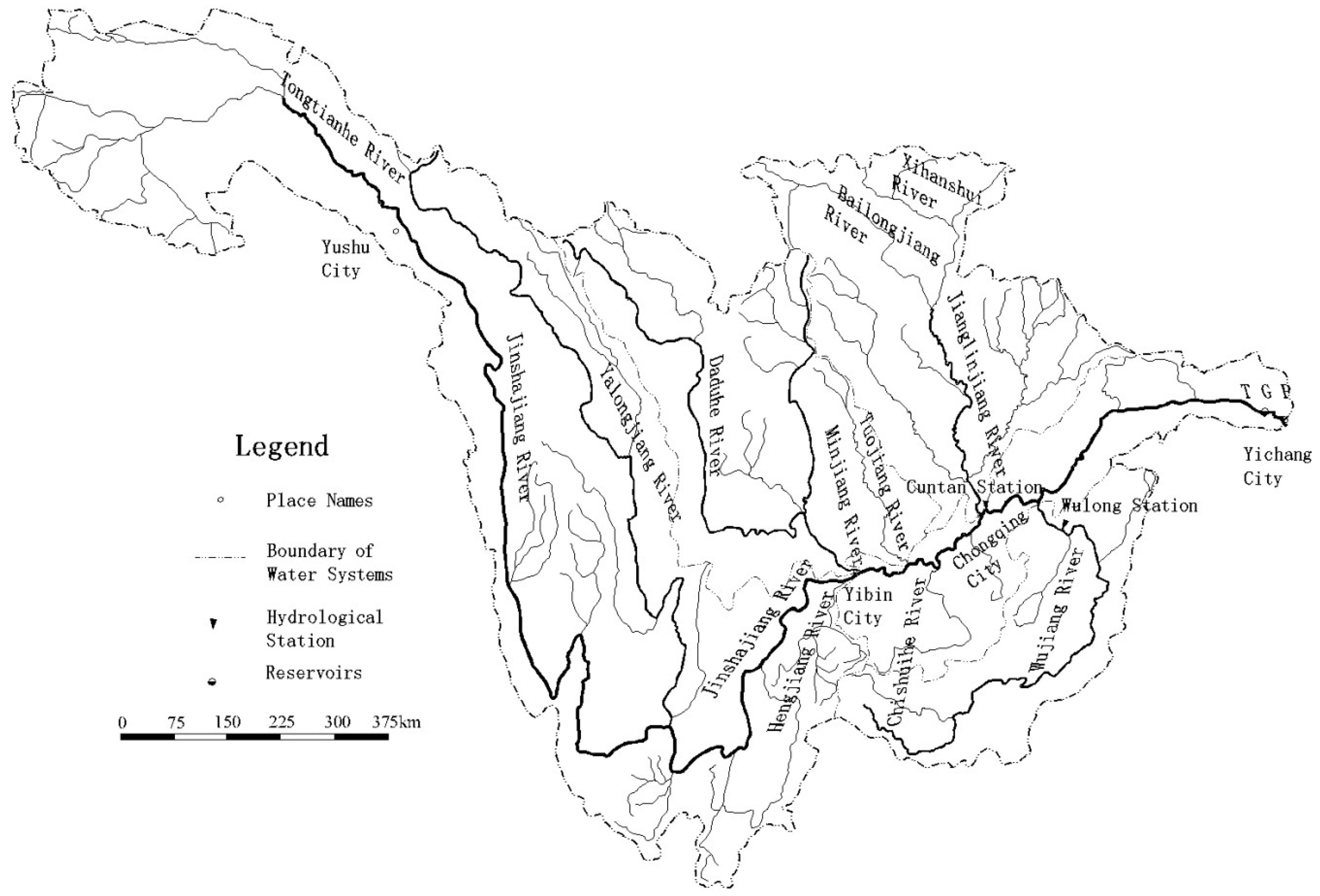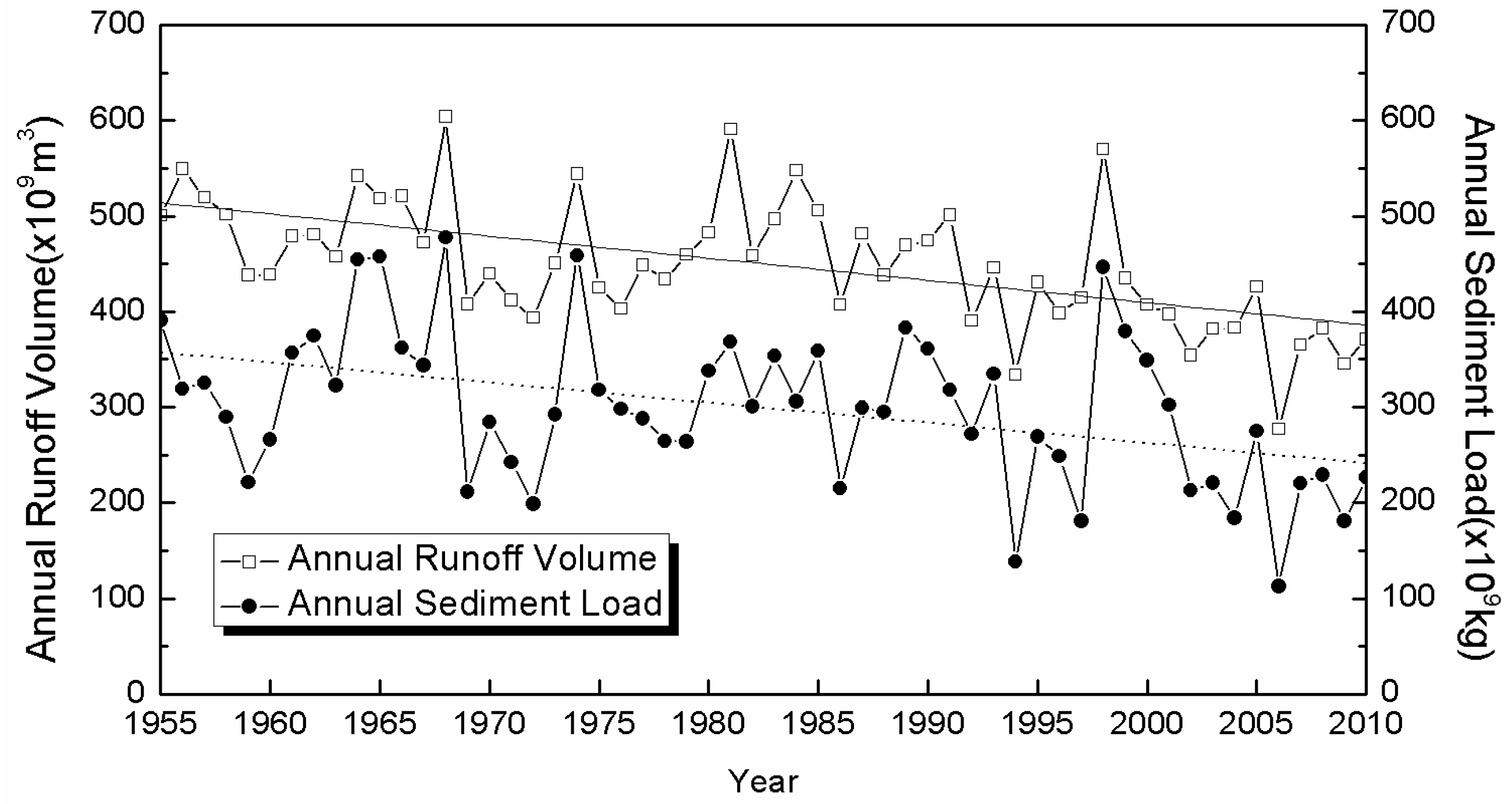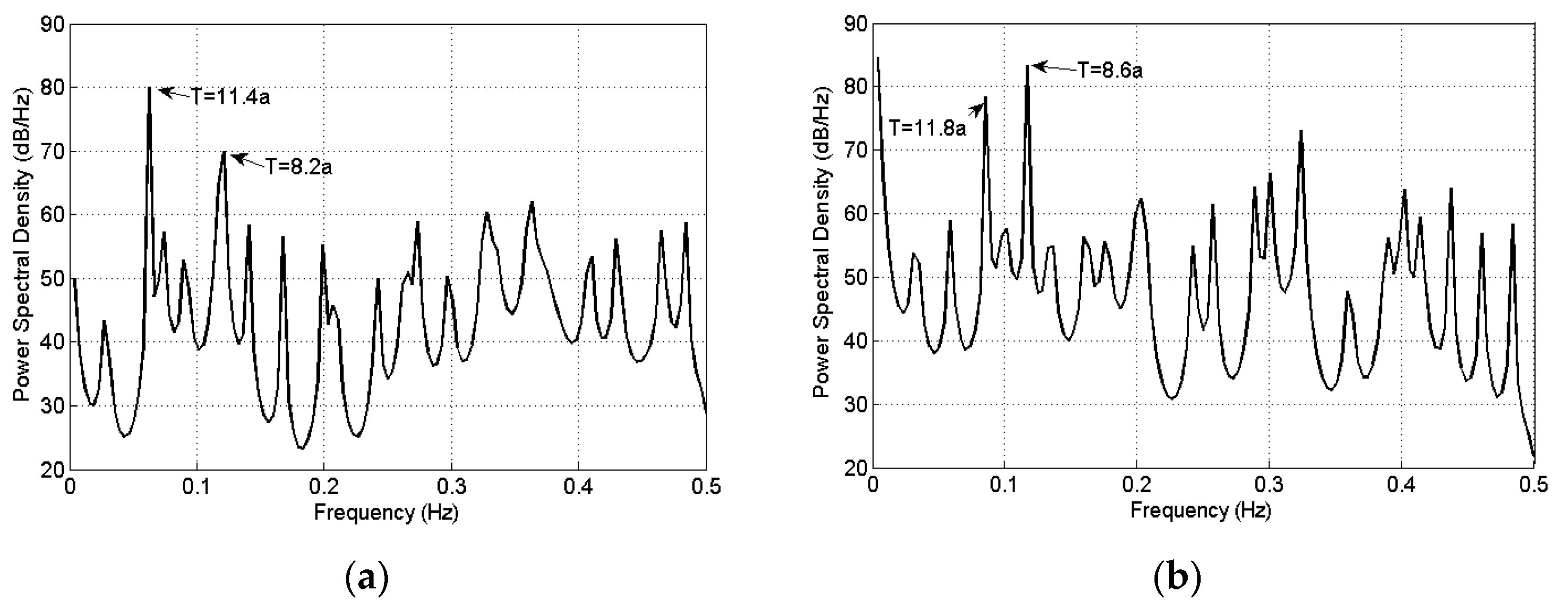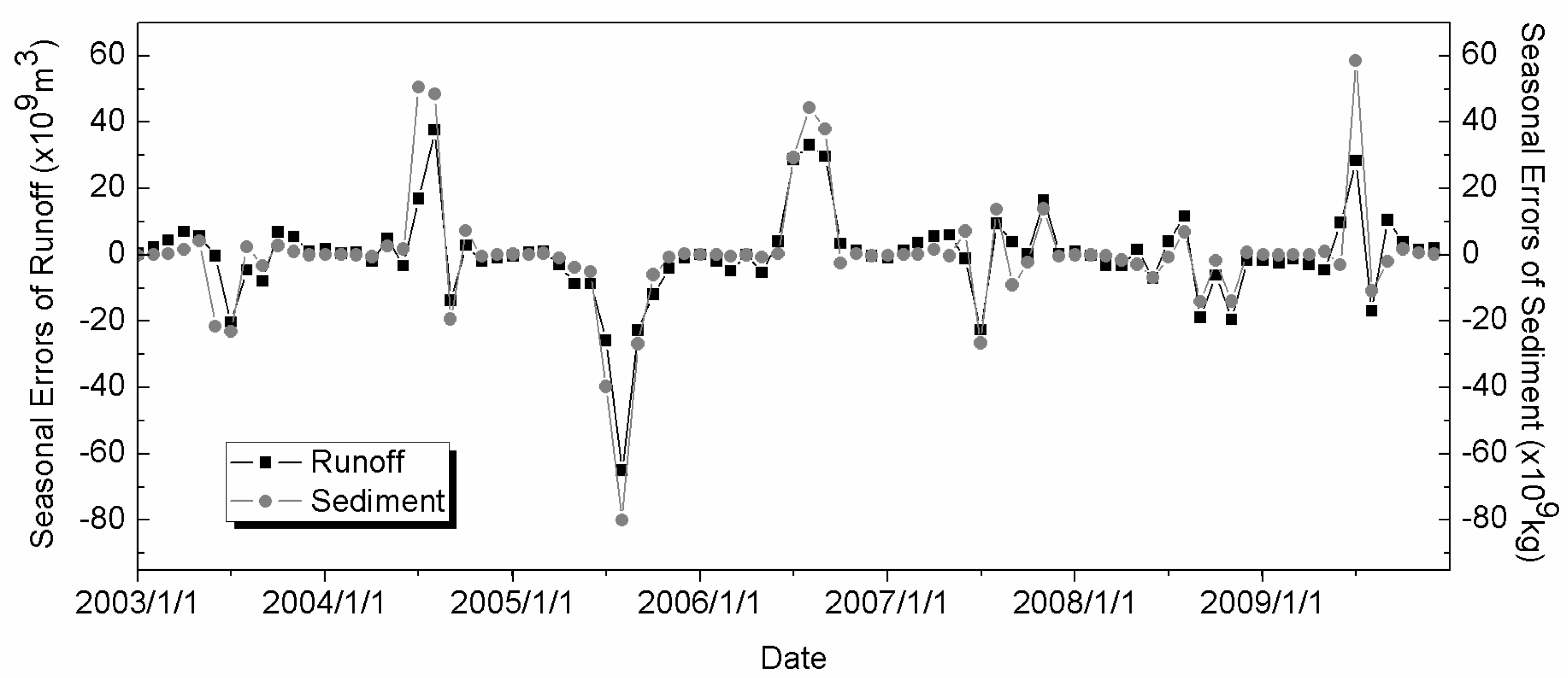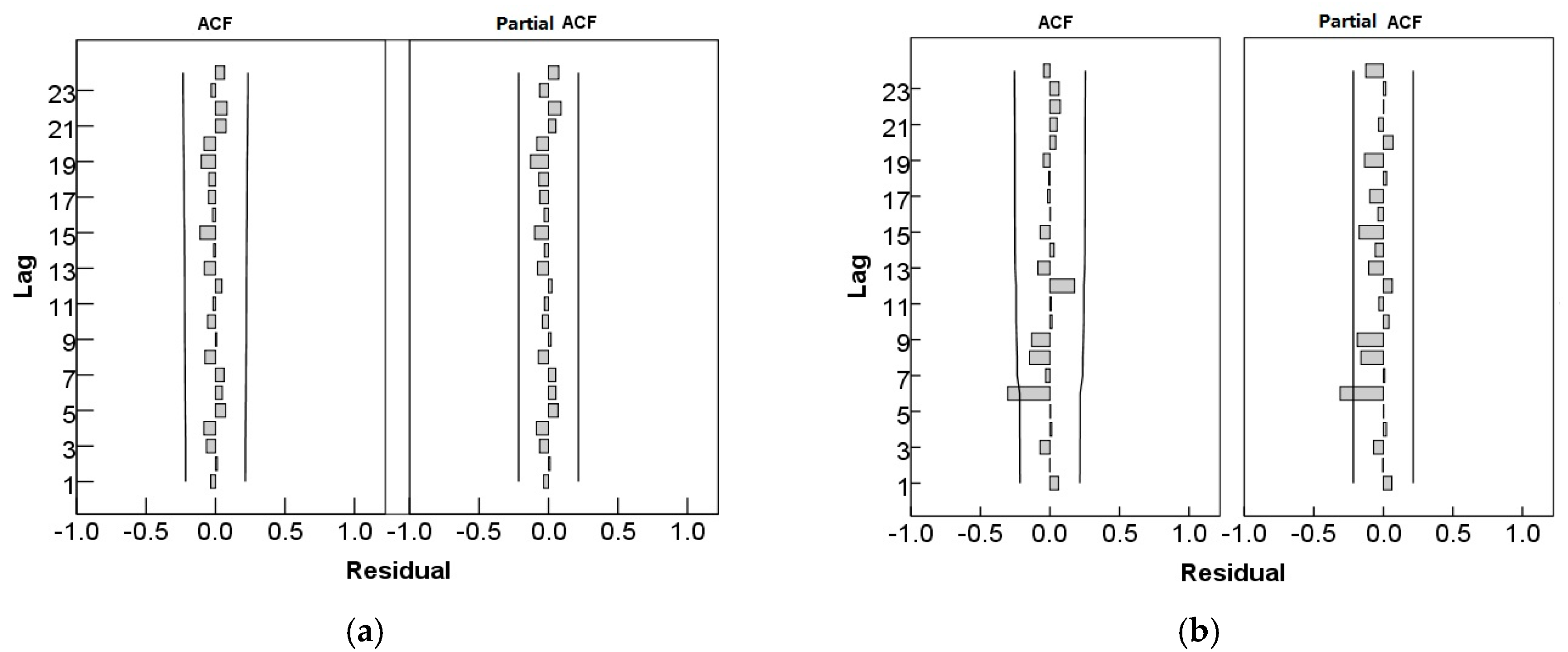1. Introduction
Chinese rivers such as the Yellow river, Jingshajiang River and Jianlinjiang River have a huge amount sediment inflow. The rapid development of the economy has given rise to a sharp increase in the demand of energy, and thus the exploitation of hydropower. A great number of large-scale hydropower stations are either under construction or have already been put to use in the basins above. Some reservoir operational lessons can be learned from China; for instance, the Sanmenxia reservoir on the Yellow River has been badly troubled by sedimentation. Hence, the sedimentation problem of large-scale reservoirs is becoming one of the most disputed problems since that reservoir’s design and demonstration. A great deal of attention has to be given to the sedimentation problem in the operation of reservoirs, especially for those reservoirs on heavy sediment-laden rivers. Characteristic analysis and accurate prediction of a reservoir’s incoming runoff and sediment are of great significance for reservoir operation. With knowledge of the incoming runoff and sediment characteristics, the regulator can adjust the reservoir discharge to guarantee the water supply and flush more sediment at appropriate time.
Numerous studies on long-term runoff forecasting have been reported, considering long-term runoff dynamics [
1], statistical properties [
2,
3,
4,
5], and conceptual hydrological models [
6,
7]. The trade-off between complexity and accuracy is a continuing challenge for runoff prediction methods.
As to the sediment, there have been some attempts to estimate the sediment yield [
8], including empirical and conceptual methods. This not only requires data records over a longer time span, but the hydrodynamics of each mode of sediment transport also need to be considered, as in [
9,
10,
11,
12]. Generally, suspended sediment load estimation at high resolutions is extremely difficult, since it depends upon the availability of high-resolution water discharge and suspended sediment concentration measurements, which are often not available [
13], and direct measurements are very expensive to conduct [
14].
The Yangtze River is the longest (6300 km) river with the largest drainage area (1.8 million km
2) in China, whose runoff and sediment rank fourth and fifth in the world, respectively [
15]. The Yangtze River plays an extremely important role, with its abundant natural resources and strategic location, in the sustainable development of China. The gross national product (GNP) of the Yangtze River Basin takes up about 1/3 of the total national amount. More than 100,000 km
2 of the upper reaches of the Yangtze River region is located in the eastern edge of Qinghai-Tibetan plateau, with a complicated geological structure, strong neotectonic movement, and large altitude difference. Under the alternating influence of the East Asian Monsoon and the South Asian Monsoon, rainfall in the upper reaches is plentiful, with a lot of heavy rainstorms, and the soil erosion is strong, which not only seriously impacts agricultural production and hydropower projects, but also provides large amount of sediment load for the mainstream of the Yangtze River.
The Three Gorges Reservoir (TGP) ranks as a key project for improvement and development of the Yangtze River. The dam is located at Yichang city in Hubei province of China, and controls a drainage area of 1 million km2, with functions of power generation, flood control, navigation, and water supply. The reservoir began storage on 1 June 2003, and the water level reached 135 m on 10 June and 139 m on 5 November after flood season. In October of 2006, the water level was raised to 156 m, and the project was put into preliminary operation. The first time the TGP achieved its normal water level of 175 m was in October 2010. The operation of the TGP is closely related to the runoff and sediment coming from upstream. According to the historical data, the annual average runoff observed at the Yichang hydrometric station is 439 × 109 m3, the annual average rate of flow is 13,900 m3/s, and the suspended sediment load is 526 × 109 kg. Sediment into the TGP impacts its service life, siltation in the backwater zone at the tail of the reservoir, waterway regulation in the port of Chongqing, safety of the dam and navigation facilities, bed scouring downstream, and flood control.
Deep research on runoff and sediment characteristics of the upper Yangtze River has been done during the design and demonstration stage of the TGP, using the hydrologic series from 1961 to 1970. There are three key factors impacting the sediment yield condition of the upper Yangtze River: climate, underlying surface conditions, and human activities. Compared with the original studies, these factors have changed to different degrees. In general, the amount of precipitation has slightly decreased, while torrential rain occurs more frequently. For the underlying surface, soil and water conservation work has reduced slope erosion, and changed the main erosion type in the upper Yangtze River, as well as the main source of the river sediment. Lastly, but most significantly, since the 1990s, with the development of economy, a large number of water conservation projects have been constructed on the Yangtze River, which have blocked, and will continue to block, a great amount of sediment. Due to the reasons above, the sediment load into the TGP has presented new characteristics since the 1990s, especially after June 2003, when the TGP began to store water. Hence, it is necessary to study the changes of sediment into the TGP in recent years under the new sediment yield environment, which is of great significance for the operation of the TGP.
Taking hydrologic series from 1955 to 2010 as research objectives, this paper uses statistical approaches to study the variation of runoff and sediment load into the TGP, including trends, catastrophe points and periodicity. The results illustrate that, although the runoff and the sediment into the TGP show volatility changes, both of them have an apparent reduction tendency with catastrophe points in the years 1991 and 2001, respectively. The actual reservoir sedimentation is not as severe or urgent as expected in the design stage. On the contrary, resulting from the sediment decrease, new equilibrium between scouring and deposition of the sediment could happen, which may lead to environmental problems downstream. The variations also present periodicities, with a cycle of a decade or so. Fuller preparation for the expected flood needs to be made when the peak of the period is coming, and this is also a good time to flush more sediment downstream. More detailed prediction models are also built in this study using the seasonal mixed Auto-Regressive Moving Average (ARMA) model based on monthly average hydrologic series from 2003 to 2010. ARIMA (1, 1, 1) × (1, 1, 1)12 and ARIMA (0, 1, 1) × (0, 1, 1)12 are selected for the runoff and sediment predictions, respectively. The models are proven to be rational and accurate for representing and predicting the runoff and sediment inflow into the TGP, which can serve for the actual operation of the reservoir.
3. Analysis on Runoff and Sediment Characteristics
The upper reaches of the Yangtze River have a large drainage area with complicated runoff and sediment yield conditions. The runoff process performs cyclical variations with a rising or declining trend, as well as abrupt points resulting from climate change and human activities, such as impounding reservoirs and water usage. For the sediment, because of the complex geological and geomorphological conditions of the upper Yangtze River, as well as the large scale of the area, yield and transport are complicated. Hence, this study only relies on the statistics of the long sequence of historical data, without cause analysis, including trend analysis, abrupt changes analysis, and cyclical analysis.
3.1. Trend Analysis
The trend analysis methods adopted in this study are accumulated anomaly analysis and the Mann-Kendall rank correlation test. Accumulated anomaly analysis [
20] is first used to estimate the general trend of runoff and sediment into the TGP, and then the Mann-Kendall rank correlation test is applied to verify the specific tendency. Accumulated anomaly analysis is a frequently-used approach for judging variation trends, and it can also be used to divide the phases of the variation. For a time sequence
xi, the accumulated anomaly at moment
t is:
where
. With the values of
St at
N moments, the accumulated anomaly curve can be drawn to analyze the tendency.
Among various trend analysis methods, the Mann-Kendall rank correlation test is the most popular, due to its lower requirements on data volume, and the smaller impact on results when data deviate from normality. The ultimate principle of the Mann-Kendall rank correlation test is that: for time series
, their dual price
P is firstly obtained; i.e., for all
, the numbers of
is
P. If
holds for all the values in this time series, then there is an uptrend, and
, while if
, there is a downtrend and
. Therefore, for a sequence without any trend,
. If
, a downtrend might exist, and if
there might be an uptrend. The statistic of U is adopted in this test:
where
;
.
converges fast to a standardized normal distribution when
N increases. Confidence level is set as
, critical value
is obtained from normal distribution table [
21].
By statistical analysis of the runoff of the years 1955 to 2010 into the TGP, the maximum and minimum values are 603.9 × 10
9 m
3 and 276.7 × 10
9 m
3, respectively, and the ratio is thus 2.18. These values of the sediment load are 477.4 × 10
9 kg and 112.4 × 10
9 kg, and the ratio between them is 4.25. These results illustrate that there is substantial year-to-year variability in the runoff and sediment, while the variation for sediment is greater than that for runoff. The accumulated anomaly curves of the runoff and sediment into the TGP are shown in
Figure 4.
The average annual runoff and sediment from 1955 to 2010 are 450 × 10
9 m
3 and 299 × 10
9 kg, respectively.
Figure 4 shows an incremental trend of the runoff before the year 1991, which reduces significantly after then, especially over the last 10 years. There are also some fluctuations over the entire procedure with inflection points, such as the years 1968, 1974, 1980 and 1985. The latest inflection point appears in 1998, when the well-known flood occurred. The tendency of the sediment load procedure is basically the same as runoff, although sometimes with a ‘time lag’, such as with the crests appearing in 2001. The sediment trend is also more obvious than runoff with larger slope.
According to the results of the Mann-Kendall rank correlation test with N = 55 and confidence level , the annual runoff statistic of runoff , the absolute value of which is larger than , presenting a prominent reduce trend. Meanwhile, for sediment at the Cuntan station , the absolute value of which is also larger than ; thus, the decreasing trend passes the significant test at 0.01 level.
3.2. Abrupt Change Analysis
Abrupt change refers to a change at a certain moment in a time series, with a steep increase or steep drop in the values before and after the jump points. The accumulated anomaly analysis above can be used for observing jump points. Additionally, Fisher’s ordered clustering method is adopted for abrupt change analysis in this study.
Fisher’s ordered clustering method divides an
N-sample sequence {
xi} into
k classes, and searches for an optimal clustering scheme to minimize the sum of the dispersion [
22]. There are two features of this method: one is that these
N samples are ordered, and the other characteristic is that the continuity of the sample order should be maintained during the clustering without any jump. When splitting the sample sequence, the data within a certain class are supposed to be close. Variance of the class is used to represent the deviation of the data in this segment. The optimal clustering criterion is to achieve minimum variance within a class, and maximum variance among different classes.
Figure 5 shows the segment result by Fisher’s ordered clustering method of 55 runoff and sediment sequence over the year 1955 to 2010, which implies the years 1991 and 2001 should be the optimal jump points for runoff and sediment clustering, respectively. The classification result by Fisher’s ordered clustering method agrees with the accumulated anomaly curves in
Figure 4. Both of the analyses indicate that the years 1991 and 2001 can be taken as jump points where the characteristics of runoff and sediment changed sharply. Taking the segment result as the standard of classification, the average runoff of the two periods before and after 1994 is presented in
Table 1, as well as the average sediment of the two periods before and after 2001.
From
Table 1, a distinct jump in the runoff into the TGP after the year 1991 can be quantized, the degree of which is −83.02 × 10
9 m
3, −36.81% of the average value of the entire data. The corresponding sediment reduction is 36.81%, with a value of 110.14 × 10
9 kg.
Such an obvious drop in the incoming runoff and sediment in recent years not only relates to global climate change, but also has a strong relationship with the massive construction of reservoirs upstream. As a result, the reservoir sedimentation problem of the TGR is not as severe as expected when designing and planning. However, the release of clean water may lead to other ecological and environmental issues downstream. For example, various nutrients adhering to sediment particles are essential to aquatic organisms downstream, which will decrease with the drop in sediment. The relationship between the mainstream of the Yangtze River and the lakes along the river may also change when the river bed downstream is lowered by clean water scouring, so that less water can re-enter the lake, resulting in the lake shrinking.
3.3. Cyclical Analysis
Maximum Entropy Spectral Analysis (MESA), which is a parametric modern spectrum analysis method, was introduced by [
23]. MESA is based on choosing the spectrum that corresponds to the most random or the most unpredictable time series whose autocorrelation function agrees with the known values. Spectral analysis methods the regard time sequence as a superposition of various regular waves with different frequencies. The main cycle can be determined by comparing the variance of different waves. The maximum entropy spectrum analysis adopts an extrapolation principle as follows: the unknown values have the greatest uncertainty.
The entropy of a stationary sequence is defined as:
where
is the spectrum density of the sequence,
.
To maximize entropy
H, the entropy spectrum has to be in the form as follows, proved by auto-regression model and Lagrangian multiplier:
where
f is the frequency,
f = 1/
T, and
T is the cycle. Plot the
If of waves with different frequency, if there is a peak in the plot, the corresponding cycle is the prominent cycle. MESA is suitable for a process with unknown basic distribution. The disadvantages of classical spectral analysis, such as subjective assumption of missing data, are overcome by MESA. Especially for short sequences, the major cycle obtained by MESA is of high accuracy.
Figure 6 shows the maximum spectral density estimates results of runoff and sediment into the TGP. The order of the spectrum analysis is set to 50, since the sequence data used in this study is only 55 years. Both the runoff and sediment present a periodical change about every 10 years. The most noticeable cycles for runoff and sediment are 11.4 years and 8.6 years, respectively. These cyclic analysis results are helpful for flood forecasting. On one hand, the flood control can be better prepared by using the reservoirs upstream; on the other hand, the cycle rule can be utilized to flush more sediment downstream when a flood is expected.
5. Conclusions
The upper reaches of the Yangtze River play a significant role for the development of downstream areas. As the largest hydropower structure in the world, the Three Gorges Project has aroused public concern since its demonstration. Plenty of previous research focuses on the sediment problems of the reservoir. However, with economic development, the environment has changed a lot, especially in recent decades. This paper takes the hydrological series from the years 1955 to 2010 to analyze the runoff and sediment characteristics into the TGP, and provides results of the variation tendency, the abrupt changes, and the periodicity of the fluctuation. The results indicate that there is a decreasing tendency for both runoff and sediment into the TGP, and jump points of the changes of runoff and sediment appear in the years 1991 and 2001, respectively. Although such a drop in incoming sediment is conducive to reservoir sedimentation, it may lead to new ecological and environmental problems downstream, as the sediment released from the reservoir decreases greatly. The cycles of the fluctuation are also presented, which are around 10 years. Using the monthly average data from 2003 to 2010, ARIMA models are built to predict the runoff and sediment into the TGP. Seasonal mixed model ARIMA (1, 1, 1) × (1, 1, 1)12 and ARIMA (0, 1, 1) × (0, 1, 1)12 are finally selected to represent the runoff and sediment sequence into the TGP, and the parameters are also calibrated. Autocorrelation and partial autocorrelation analysis illustrates that the models can be used to represent the runoff and sediment into the TGP with a high level of accuracy. The accurate forecast of incoming runoff and sediment not only helps for the flood control, but can also be made use of for flushing more sediment downstream when the flood comes, so as to alleviate the ecological and environmental problems resulting from the sediment reduction.
